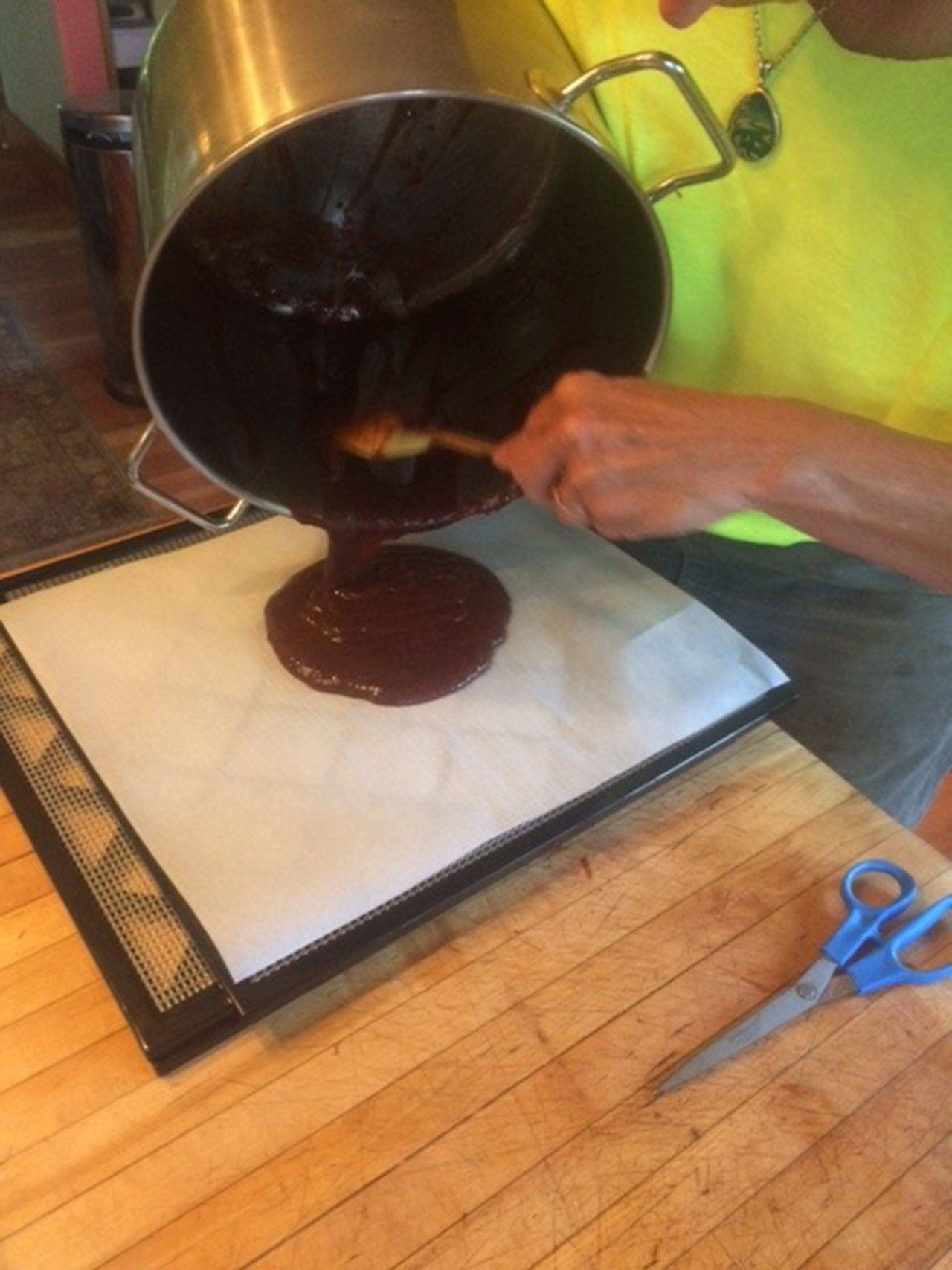IN HER MOST recent Peninsula Kitchen column, Carrie Sanford shared some great tips for maintaining sanity on a cross-country road trip by being mindful of eating well, especially regarding snacks.
As Americans, we don’t agree on much, but most of us do like to snack.
In fact, we have become a nation of snackers, and our food industry is more than happy to supply us with grabable treats that we can carry along for quick energy.
Unfortunately, many of these products are loaded with unpronounceable ingredients including sugar in all of its chemical forms.
If you are interested in snacking local, try making your own fruit leather.
It is a delicious, nutritious snack for lunch boxes, after-school snacks or just about anywhere.
To make fruit leather, begin with a puree of well-ripened fruit.
Don’t overlook your own freezer as a place to source ingredients. If you find something fruity collecting ice crystals or you can barely read the date on the bag, thaw it out and use it.
Yesterday in my freezer, I found a small Ziploc of freezer-burnt peaches, a pint of raspberry freezer jam, four black bananas saved but never used for banana bread, a few fruit Popsicles covered in ice crystals and a bag of cranberry horseradish relish leftover from Thanksgiving.
Because I am a self-avowed preservation fanatic, I took this weird array of subprime ingredients as a personal Iron Chef opportunity and decided to turn it all into leather.
Currently, it is all pureed and poured onto parchment and drying in the dehydrator.
The house smells sweet and spicy, and I will soon have a unique array of delicious snack options for my next hike.
Whatever fruit you are using, remove pits if needed, but it is generally not necessary to remove the skin — except for bananas, of course.
Cook it in a saucepan with enough liquid to prevent burning.
Cook for about 10 minutes, more if you need to thicken the puree, then use a blender stick or a blender to puree.
Additional sweetening can be added according to your personal taste preference, but if you are using soft ripe fruit, added sugar is usually not necessary.
If you decide to add sweetener, use restraint.
I dried the raspberry freezer jam (I love to experiment), and it turned into a sticky mess due to the high amount of sugar in the jam.
I’ll use it for cooking (yes, the leather will dissolve and add a fruity sweetness to salad dressing, curries and sauces).
Be creative with spices: Ginger is nice with peaches, almond extract is a great complement to cherries and it turns out that cranberries and horseradish make an excellent leather for the adventurous adult palate.
Once you have a smooth, well-flavored puree, cover the dehydrating trays with parchment paper and pour it out evenly to about 1/8-inch thick, with the edges a little thicker because they will dry faster than the center.
Dehydrate fruit leather at 135 degrees for about eight hours.
If you are using your equipment for the first time or are new to making fruit leather, don’t leave the heat going all night because you’ll want to check it every few hours to avoid overdrying.
Leather is finished when it is barely sticky and still flexible.
Allow sheets of leather to cool completely.
If there are any that are not quite finished, return to the dryer or use them within the next week or so.
Everything else can be rolled with the paper like a burrito and stored in glass jars or plastic wrap.
If fruit leathers are dried sufficiently and stored out of contact with air, they will last in a pantry for a year or more.
________
Betsy Wharton is a Port Angeles Farmers Market vendor, Washington State University Extension food preservation information assistant and a registered nurse at First Step Family Support Center. More about her pickling enterprise can be found at www.Clallam CanningCompany.com.

